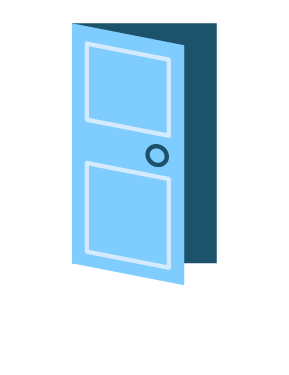For whom?
Dutch museums and other cultural heritage institutions, possibly in collaboration with other heritage institutions.
The aim of the Acquisitions grant is to enhance the quality and visibility of the Dutch National Cultural Heritage Collection.
For what?
The grant is intended for acquisitions that enrich the Dutch National Heritage Collection and are (semi-)permanently on display to the public. It applies to notable acquisitions across all areas of collecting: from contemporary art and crafts to ancient manuscripts and natural history collections. If the intended acquisition comprises multiple objects, funding is only available if these objects constitute an inseparable ensemble. Grants cannot be requested for the acquisition of artists’ estates. The grant also applies to the acquisition of objects listed in the register of protected cultural heritage under the Cultural Heritage Preservation Act.
How much?
The sum is determined per application, based on the budget. The maximum grant offered by the Mondriaan Fund is 40% of the estimated value of the acquisition.
When and how to apply?
Applications can be submitted at any time of the year, using our online application system. You will require an account before you can submit an application. If you do not already have an account, please apply for one on this website. Keep in mind that a 3-month period is required for processing the applications. No grants are awarded retrospectively.
In exceptional cases, an application may be submitted at a later stage, for example in the case of an urgent acquisition. Please contact the grant officer to discuss the options.
The following is based on the deelregeling Incidentele Aankopen (in Dutch), as published in the Staatscourant.
Terms and conditions
- The application procedure is open to publicly accessible Dutch institutions that are in charge of museum collections of national or international significance.
- When a museum submits an application, it is registered in the museum register.
- Grants cannot be used for acquisitions which institutions can be reasonably expected to fund from their regular budgets.
- Museums which receive an Acquisition Programs grant must explain in their applications why they are unable to fund the acquisition from their Acquisition Programs budget.
- If the intended acquisition comprises multiple objects, funding is only available if these objects constitute an inseparable ensemble.
- The application must include research into the provenance of the intended acquisition. If the provenance is incomplete, the application must also include an overview of all steps taken by the applicant to determine whether the object may have a problematic history, such as (potential) cases of looted art, unlawful acquisition or illegal export from the country of origin.
- Acquisitions grants cannot be used to fund constructional provisions, the preservation of listed buildings, the excavation of archaeological objects or passive conservation. Nor can they be used to document the institution’s collection.
- Grants cannot be requested for the acquisition of artists’ estates.
- The estimated value of the object must exceed € 50,000. This value must be substantiated by the valuation report provided, as specified in the checklist. The valuation must be carried out by an independent valuer who has no ties with the applying institution.
- The institution is accommodating in its lending practices with other Dutch institutions and follows the Slimmer Lenen guidelines, generally granting loan requests unless there are compelling reasons not to, such as concerns about security, climatic conditions or the object’s condition. Dutch museums are not charged loan fees. Direct costs, such as for transport, insurance and crating (handling fees) are kept as low as possible. If a loan is denied, the institution must provide a substantive explanation to the requesting party.
- The acquisition will remain part of the Dutch National Cultural Heritage Collection for a long time and its ownership will not be transferred without the Mondriaan Fund’s authorisation.
- The preservation of the acquired object will be safeguarded through proper constructional provisions, climate control and security measures.
- The applicant will make a significant financial contribution to the acquisition of the object itself.
- In principle, applications requesting more than € 500,000 are submitted to the Ministry of Education, Culture and Science for a contribution from the Museum Acquisition Fund, unless the Board of the Mondriaan Fund decides otherwise. If you wish to apply for more than € 500,000, always contact one of the grant officers for this scheme beforehand. Objects listed in the register of protected cultural heritage under the Cultural Heritage Preservation Act with a purchase price above € 1,000,000 are not eligible for an Acquisitions grant. For these, you should contact the Ministry of Education, Culture and Science directly.
- The applicant should provide a clear account of how the purchase price was established. This may include aspects such as: how was the market value determined? How was the final sum agreed upon? Were there negotiations on the purchase price, and what was the outcome?
- If the Mondriaan Fund chooses to appoint a representative of an auction house to the advisory committee, the museum will not be allowed to request an appraisal or countercheck from the same auction house.
- Privately owned museums can only apply for a grant if their articles of association state that their collection or the object concerned belongs to the publicly accessible Dutch National Cultural Heritage Collection.
- The acquisition will be displayed to the public at once or as soon as possible.
Assessment
Mondriaan Fund staff check the submitted applications and attachments to ensure that they are complete. Once an application is complete, it is submitted to the advisory committee that advises on awarding the Acquisitions grant.
For applications concerning multiple objects or a sub-collection:
If the application concerns multiple objects or a sub-collection, the Fund Office will assess whether these objects together constitute an inseparable ensemble. Advice may be sought from an external expert. The application will only be submitted to the advisory committee if the objects are determined to constitute an inseparable ensemble.
Final assessment
A grant can only be awarded if the advisory committee advises to that effect. When issuing a positive recommendation, the advisory committee may also advise on the amount of financial support to be awarded. Due to budgetary constraints, the Board may decide to grant a lower sum than requested.
The advisory committee assesses the application on the basis of:
- A viewing of the object by one or more committee members.
- A justification of the significance of the acquisition and its relevance to the Dutch National Cultural Heritage Collection as well as to the institution’s own collection.
- A presentation plan explaining how the acquisition will be (semi-)permanently displayed to the public after it has been acquired.
- A valuation and condition report, a provenance research, as well as more information on how the purchasing price was determined.
- A budget with financial plan in accordance with Mondriaan Fund guidelines.
- If applicable, a rationale for the collaboration.
The advisory committee considers the following criteria in conjunction with one another:
- The art-historical and cultural-historical significance of the intended acquisition.
- The significance of the acquisition for the Dutch National Cultural Heritage Collection.
- The significance of the acquisition for the applicant institution’s own collection.
- The degree of visibility and quality of the presentation plan.
- Additionally, the committee assesses whether the price justification, condition and provenance have been sufficiently substantiated.
Checklist
To process your application, the Mondriaan Fund needs information. All of this information can be submitted in the application form itself, along with documentation that you can upload. Here below is a checklist that follows the layout of the application form and contains all the information required.
Tip: collect all your information before you start filling out the online application form. Your attachments should be uploaded as PDFs. Please note: make sure that your documents meet the stated conditions. Otherwise, we will unfortunately not be able to process your request. Do not exceed the number of pages where a maximum is indicated.
Checklist
Recent and up-to-date (no longer than 1 year old) extract from the Chamber of Commerce.
Information about the organisation (max. 4 pages)
This should include a description of activities of the platform over the past 3 years, with your mission, target groups, cooperative partnerships, audience reach and how your normally respond to loan requests. If the application involves a collaboration with one or several organisations, we also ask a description of the activities of those organisations.
Valuation report
An official valuation report from an independent valuer. The valuation report provides a well-substantiated estimate of the object’s value, and may include:
- A substantiated description of the object/collection.
- A substantiated assessment of the work’s art-historical and/or cultural-historical significance.
- A substantiated assessment of the quality of the work in relation to the artist’s overall oeuvre and previous sales results.
- If the work is identified as a key piece, a justification supporting this classification.
- An exhibition history, indicating where and in what context the work or collection has been displayed.
- The provenance.
- The market value: the acquisition and sales history of the work/collection, including the auction history, with the prices paid. If this information is unavailable, for example due to the recent date of the work, include the acquisition and sales history of comparable works by the artist.
- Literature in which the work is discussed.
- The condition of the work.
Condition report
If not applicable, please upload a document with the reason.
Provenance research
Provenance research outlining the efforts undertaken by the institution to determine that the object does not have a problematic history, was not unlawfully acquired, and was not illegally exported from its country of origin. If it is not possible to provide complete provenance information, the museum should explain the steps that were taken to rule out a problematic history.
Motivation for acquisition
Mention the importance of the acquisition, the (art) historical value and the relevance in relation to the collection of the organisation and the Dutch National Cultural Heritage Collection. Provide insight into the processes involved in the establishment of the purchasing price, which may or may not involve a discussion of the following items: How did the market value of the acquisition come about? How was the amount determined? Was the purchasing price subject to negotiations, and if so, what was the result of these negotiations?
Presentation plan (max. 15 pages)
With a description of how the acquisition will be presented as soon as possible and a description of how you intend to attract and bind a relevant audience to the acquisition.
Collection plan
The most recent collection plan of the organisation, with an explanation of the importance of the collection and the acquisition plans, and its relevance for the organisation’s collection and the Dutch National Cultural Heritage Collection.
Itemised budget with financing plan (state: excluding VAT)
Click here for the explanation of the budget for organisations. If third parties are involved in the financing of the plan, please upload the total budget with financing plan and not just the part for which you apply with the Mondriaan Fund.
Visual documentation of the work (max. 20 images)
In one PDF file with a maximum of 12 MB. Please note: do not use hyperlinks in the PDF. We cannot accept hyperlinks (to web pages for example) because the supplied image material may not be adjusted during the processing of the application.
Application of codes
Cultural institutions subscribe to the Fair Practice Code, the Culture Governance Code and the Diversity & Inclusion Code. Please provide a brief description of your institution’s perspective on these codes and how they are embedded within your organisation. Endorsing the Fair Practice Code automatically implies that the institution actively implements these principles.
If applicable:
In the case of acquiring work by a living artist or an installation:
Please provide an explanation of how the institution intends to care for the object in the long term, in keeping with the artist’s vision. This could include aspects such as restoration, an installation manual, maintenance, or the replacement of parts.
In the case of the acquisition of multiple objects or a sub-collection:
An explanation of the ensemble value, explaining why these objects constitute an inseparable ensemble.
Statutes
A private museum may only submit an application if its statutes specify that the collection will become part of the Dutch National Cultural Heritage Collection.
Bank details
We need your bank account number to transfer funds if your application is granted. If you have not previously submitted an application to the Mondriaan Fund or if the account number has changed since the previous application, please upload a recent bank statement clearly stating the name of the account holder and IBAN/bank account number of the applicant.
Declarations of financial contributions
If applicable. Collect all documents in one PDF file.
Proof from Tax Administration (if not liable for VAT)
If the organisation on whose behalf you are applying is not liable for VAT, and you would like to apply for funding including VAT, you must provide official proof from the Tax Administration confirming the organisation’s VAT-exempt status.





